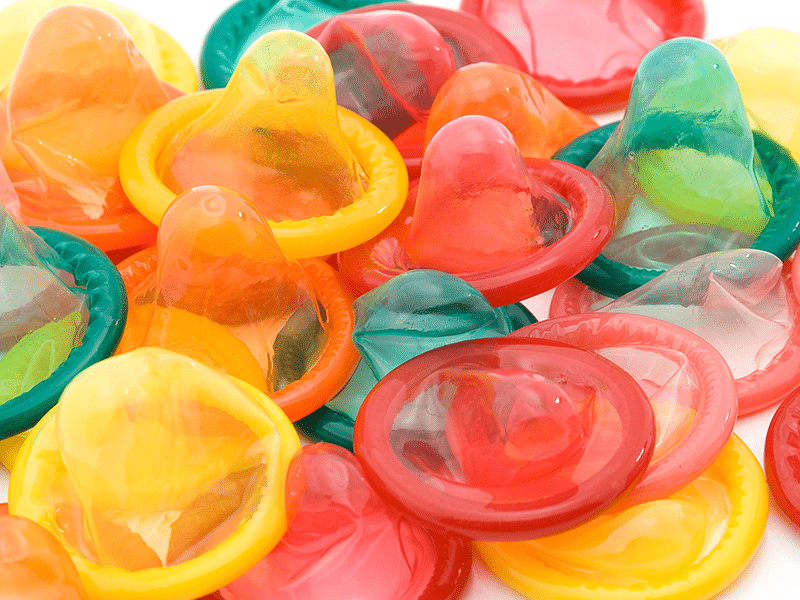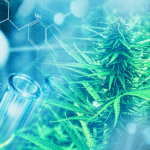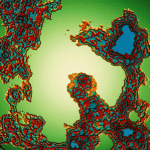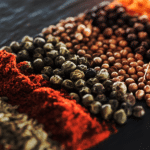From suppositories and lubes to massage oils and vape pens, there’s no shortage of cannabis products on the market that supposedly increase libido. And there’s also no shortage of claims about how cannabis can enhance pleasure and supercharge our sex lives.
A Stanford University study generated headlines in 2018 by revealing that regular cannabis users have 20 percent more sex than non-cannabis users. What’s more, according to several surveys cannabis consumers aren’t just having more sex – they’re having better sex, as well. And this could have significant implications for treating common sexual problems that burden much of the populace.
The Cleveland Clinic reports that issues with sexual function affect 43 percent of women and 31 percent of men in the United States. As it stands, effective treatments for sexual disorders are woefully inadequate. If cannabis could help with sexual function and performance issues — meaning anything from low libido and vaginal dryness to premature ejaculation and inability to reach orgasm — it would be the remedy that millions of people have been waiting for.
Despite the many claims about cannabis and sex, there’s currently no clinical research proving that cannabis has any direct influence on sexual experience. Official barriers to researching the plant — and the extremely nuanced and complicated science of sexuality — have frustrated efforts to study the relationship between cannabis consumption and sexual function.
Thus, we don’t have any double-blind, randomized, placebo-controlled trials on the effect that cannabis — or any single plant components, such as CBD (cannabidiol) or THC (tetrahydrocannabinol) — has on sexual experience. What we do have, however, is a mishmash of animal studies, surveys, and related research that make some interesting connections between the world of sex and the world of cannabis – connections that are that compelling enough to warrant further consideration.
Is Cannabis an Aphrodisiac?
Cannabis has been used as an herbal aphrodisiac for thousands of years. To cite just one example, practitioners of Ayurvedic medicine in ancient India often recommended cannabis to improve male sexual performance and virility. A review article in BioMed Research International, citing historical data in a section on “Ayurveda and the Concept of Aphrodisiacs,” referred to cannabis as a plant that delays ejaculation and improves ejaculatory function.
It appears that humans have been mixing cannabis and sex, with positive results, for quite a long time. But it wasn’t until relatively recently that academics began to focus on this area.
A 1979 study in the Journal of Clinical Psychology was among the first peer-reviewed papers to reveal substantial evidence of a link between cannabis and sexual functioning. Eighty-four graduate students were asked about their experience with cannabis and sex; the results showed that “experienced cannabis users” believed that the plant improved orgasm and should be considered an aphrodisiac. As the authors (Dawley et al) concluded: “The implication is that there may be value in researching the use of marijuana in treatment of sexual disorders.”
Similarly, a series of anonymous questionnaires given to college students in 1984 showed that over two-thirds reported greater sexual pleasure and satisfaction with cannabis use. Published in the Journal of Sex Research, this study also found that “most had used marijuana as a preparation for intercourse on occasion, and 20% did this on a regular basis.”
Indeed, most of what we know about cannabis and sex has been gathered through surveys. This is somewhat problematic as surveys rely primarily on a person’s memory. Survey responses are highly subjective – “enjoyable sex” could mean many different things depending on the individual.
The Endocannabinoid System & Sex
Why does cannabis lend itself so well to sexual intimacy?
According to a 2017 report by Czech scientists in Psychopharmacology, cannabis stimulates a part of the brain called the right nucleus accumbens, which also plays an important role in controlling sexual arousal. Otherwise known as the brain’s pleasure center, the nucleus accumbens is densely populated with CB1 cannabinoid receptors that are activated directly by THC and indirectly by CBD.
CB1 receptors are part of what scientists refer to as the endocannabinoid system (ECS), the major regulatory mechanism in the brain and body that balances many physiological processes and mediates how we experience the effects of cannabis.
As it turns out, there’s quite a bit of overlap between the ECS and the physiology of sexual function. For starters, cannabinoid receptors are located in organs that produce sex hormones, as well as in the reproductive organs themselves. Cannabinoid receptors are also present on the axon terminals of dopaminergic and serotonergic neurons, which play an important role in sexual function and interact with testosterone, estrogen, and oxytocin to modulate sexual response. The ECS influences the ebb and flow of various hormones and neurotransmitters.
Italian scientist Mauro Maccarone has described the ECS as “the guardian angel” or “gatekeeper” of mammalian reproduction. Extensive preclincal research has established that cannabinoid receptor signaling is involved in every stage of the reproductive process – from sexual arousal to climax to fertilization to embryo implantation and throughout fetal development.
Arousal & Orgasm
A 2012 study by U.S. and Canadian researchers shed additional light on connection between the ECS and sex. The authors (Klein et al) measured serum concentrations of the endocannabinoids 2-AG and AEA (the brain’s own marijuana-like compounds) in 21 healthy women before and after they viewed neutral and erotic film stimuli. Sexual arousal was also measured through vaginal photoplethysmography, a technique that allows you to observe volumetric changes in an organ or body. Another device, called an “arousometer,” measured continuous subjective arousal throughout the duration of the film.
The findings of this experiment were published in the Journal of Sexual Medicine. The authors observed a direct correlation between circulating endocannabinoid levels and sexual arousal in women: AEA concentrations dropped significantly as female sexual arousal increased, and 2-AG concentrations were also “significantly negatively correlated with increased perceptions of physiological sexual arousal, overall subjective sexual arousal, and increased continuous subjective sexual arousal.”
When arousal culminates in climax, our endocannabinoid levels suddenly spike, according to a 2017 paper titled “Masturbation to Orgasm Stimulates the Release of the Endocannabinoid 2-Arachidonoylglycerol in Humans.” In this report, a team of German scientists noted that “endocannabinoids are critical for rewarding behaviors such as eating, physical exercise, and social interaction,” as well as sexual pleasure. Published in the Journal of Sexual Medicine, the results of this single-blind randomized study showed that 2-AG is released after climax and “may play a role in the rewarding consequences of sexual arousal and orgasm.”
According to a 2019 survey of 373 women published in Women’s Sexual Health, more than half of those who had used marijuana before sex reported an increase in sex drive and better orgasms. Similar findings were highlighted in a 2019 review paper — titled “Effects of Cannabinoids on Female Sexual Function” — coauthored by Becky Lynn, M.D., an assistant professor in the Department of Obstetrics, Gynecology, and Women’s Health at St. Louis University School of Medicine. Lynn’s team concluded that combining cannabis and sex appears to be associated with prolonged and more satisfying orgasms.
Sexual Healing
Physiologically speaking, what explains the positive associations between cannabis use and sexual experience? There are likely dozens of factors involved. THC and CBD are both vasodilators, which means that cannabis relaxes and dilates blood vessels. And vasodilation plays a key role in sexual arousal. Cannabis can also improve sexual function by reducing anxiety and pain, which are common barriers to positive sexual experience. Seventy percent of 199 men and women, who responded to a survey by University of British Columbia researchers, said they could relax more during sex when they used cannabis.
In a 2011 review of existing research titled “Impact of Cannabis Use on Male Sexual Health,” two Canadian doctors suggested that cannabis may actually promote erectile dysfunction. But the same review article also concluded that “most results of these studies are conflicting and contradictory.” These inconsistent findings may be attributable to the biphasic nature of cannabis and its key components, THC and CBD, whereby low and high doses generate opposite effects.
The dose-dependent signaling of CB1 cannabinoid receptors – which THC and CBD interact with – could have a major impact on the quality of stoned sex. Multiple sources have shown that the CB1 receptors play an important role in sexual function. A 2008 Canadian study determined that antagonism of CB1 receptors promotes ejaculation, which suggests that CB1 could be “a novel target for pharmacological agents aimed at treating ejaculatory-based sexual dysfunction.”
From this one can reasonably infer that a moderate dose of cannabis, which stimulates CB1, will delay ejaculation, while a high dose could desensitize the receptor and inhibit how it signals, thereby facilitating ejaculatory processes. A similar dynamic may apply to marijuana’s impact on libido: a small amount of cannabis tends to energize, while a large amount can be sedating. In support of this theory, a 1978 study on rats showed that low doses of THC enhanced lordosis (a measure of libido), but high doses did not.
So when it comes to cannabis and sexual pleasure, a little less weed might mean a lot more fun.
Gretchen Lidicker is a writer, content creator, brand consultant, and expert in all things health and wellness. She’s also the author of CBD Oil Everyday Secrets, and was formerly the health editor at mindbodygreen. Copyright, Project CBD. May not be reprinted without permission.
References
- Androvicova, R., et al. “Individual Prolactin Reactivity Modulates Response of Nucleus Accumbens to Erotic Stimuli during Acute Cannabis Intoxication: an FMRI Pilot Study.” Psychopharmacology, vol. 234, no. 13, Dec. 2017, pp. 1933–1943., doi:10.1007/s00213-017-4601-1.
- Chauhan, Nagendra Singh, et al. “A Review on Plants Used for Improvement of Sexual Performance and Virility.” BioMed Research International, Hindawi Publishing Corporation, 14 Aug. 2014, https://www.ncbi.nlm.nih.gov/pmc/articles/PMC4151601/.
- Croft, Harry A. “Understanding the Role of Serotonin in Female Hypoactive Sexual Desire Disorder and Treatment Options.” The Journal of Sexual Medicine, vol. 14, no. 12, Dec. 2017, pp. 1575–1584., doi:10.1016/j.jsxm.2017.10.068.
- Dawley, Harold H., et al. “An Attitude Survey of the Effects of Marijuana on Sexual Enjoyment.” Wiley Online Library, John Wiley & Sons, Ltd, 21 Feb. 2006, https://onlinelibrary.wiley.com/doi/abs/10.1002/1097-4679(197901)35:1<212::AID–JCLP2270350135>3.0.CO;2-K.
- Fuss, Johannes, et al. “Masturbation to Orgasm Stimulates the Release of the Endocannabinoid 2-Arachidonoylglycerol in Humans.” The Journal of Sexual Medicine, vol. 14, no. 11, Nov. 2017, pp. 1372–1379., doi:10.1016/j.jsxm.2017.09.016.
- Gordon, John H., et al. “Δ 9 -Tetrahydrocannabinol Enhancement of Lordosis Behavior in Estrogen Treated Female Rats.” Pharmacology Biochemistry and Behavior, vol. 8, no. 5, May 1978, pp. 603–608., doi:10.1016/0091-3057(78)90395-7.
- Gorzalka, Boris B., et al. “Endocannabinoid Modulation of Male Rat Sexual Behavior.” Psychopharmacology, vol. 198, no. 4, 2007, pp. 479–486., doi:10.1007/s00213-007-0901-1.
- Johnell, Kristina, and Inga Klarin. “The Relationship between Number of Drugs and Potential Drug-Drug Interactions in the Elderly.” SpringerLink, Springer International Publishing, 9 Jan. 2013, https://link.springer.com/article/10.2165/00002018-200730100-00009.
- Klein, Carolin, et al. “Circulating Endocannabinoid Concentrations and Sexual Arousal in Women.” The Journal of Sexual Medicine, vol. 9, no. 6, June 2012, pp. 1588–1601., doi:10.1111/j.1743-6109.2012.02708.x.
- Lynn, Becky K., et al. “The Relationship between Marijuana Use Prior to Sex and Sexual Function in Women.” Sexual Medicine, vol. 7, no. 2, June 2019, pp. 192–197., doi:10.1016/j.esxm.2019.01.003.
- Lynn, Becky, et al. “Effects of Cannabinoids on Female Sexual Function.” Sexual Medicine Reviews, 12 Sept. 2019, doi:10.1016/j.sxmr.2019.07.004.
- Pfaus, James G. “REVIEWS: Pathways of Sexual Desire.” The Journal of Sexual Medicine, vol. 6, no. 6, June 2009, pp. 1506–1533., doi:10.1111/j.1743-6109.2009.01309.x.
- Shamloul, Rany, and Anthony J. Bella. “Impact of Cannabis Use on Male Sexual Health.” The Journal of Sexual Medicine, vol. 8, no. 4, Apr. 2011, pp. 971–975., doi:10.1111/j.1743-6109.2010.02198.x.
- Weller, Ronald A., and James A. Halikas. “Marijuana Use and Sexual Behavior.” The Journal of Sex Research, vol. 20, no. 2, 29 Apr. 1984, pp. 186–193., doi:10.1080/00224498409551216.
- Wiebe, Ellen, and Alanna Just. “How Cannabis Alters Sexual Experience: A Survey of Men and Women.” The Journal of Sexual Medicine, vol. 16, no. 11, Nov. 2019, pp. 1758–1762., doi:10.1016/j.jsxm.2019.07.023.
Recommended Readings
Sex: I Want to Want It
Women of a certain age turn to cannabis to rekindle their sexual mojo.
Safer Sex
Sex research has often been misused to stigmatize marginalized groups.
Cannabis Use and Pro-Social Behavior
Scientists link weed smoking to greater empathy, agreeableness, and moral fairness.












